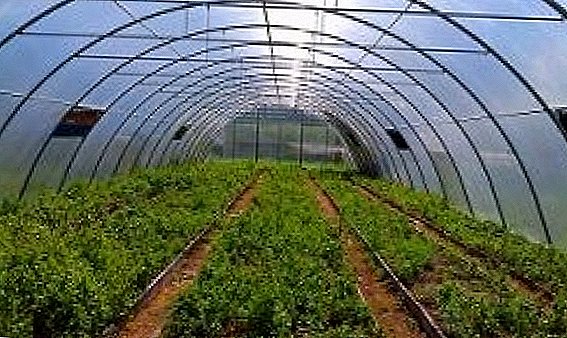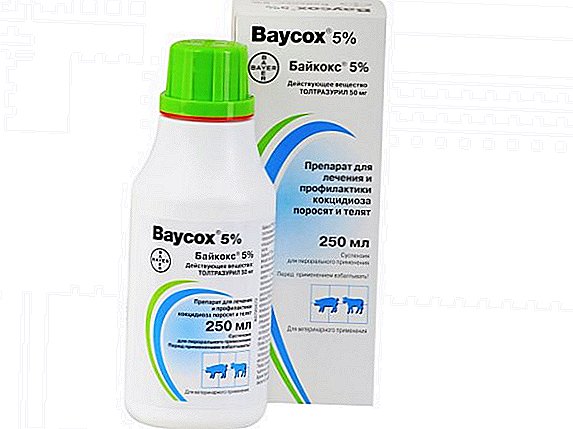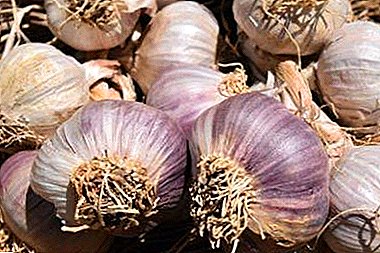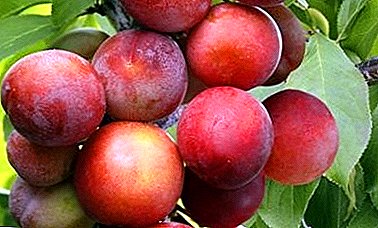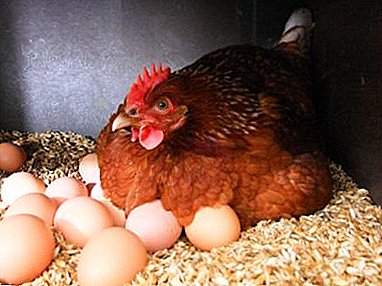
Chickens need more gentle and careful care in the country, because any oversight in the content may lead to a sharp decline in egg production. Stress hens react very badly. Therefore, you need to carefully treat the egg breeds of chickens.
The main points and nuances of keeping hens at home and the characteristics of their care will be discussed below.
The organization of the place of sleep and walking at home
The place to sleep for the hens should be first of all dry and warm.. Usually chickens sleep on perches, or on the floor, provided that the floor is quite warm even during the cold season. Perches are set at about 30-40 cm from the floor, but can be set higher.
If the perches are set high enough from the floor, which is convenient when cleaning the chicken coop, you should consider how the chickens will climb on them.
 For this, a small ladder is placed or intermediate rails are attached between the main perches. There should be enough rodents so that all birds can fit. on them and they were not crowded. They must be distributed in such a way that there is at least 20 cm of free space per individual. Perch width for perch is about 5 - 6 cm.
For this, a small ladder is placed or intermediate rails are attached between the main perches. There should be enough rodents so that all birds can fit. on them and they were not crowded. They must be distributed in such a way that there is at least 20 cm of free space per individual. Perch width for perch is about 5 - 6 cm.
Most often, the pen and coop is located so that the bird can move freely from one place to another.
To do this, between the place to sleep and for walking make small doors-manholeswhich are open both day and night during the warmer months so that chickens can sleep outside and are closed in cold weather.
IMPORTANT: All birds, with the exception of breeds of mini meat chickens that may be kept in cages, need free-range. To do this, next to the chicken coop should think out a place where the bird will be able to walk on their own.
At home, a private farmstead, usually, the enclosure is enclosed with a fence or a fine mesh. The place must be covered with a roof so that in the rain the bird can comfortably be outside, and in case of strong heat, take shelter from the hot sun.
Take care that other birds, such as sparrows or pigeons, cannot get into the hen house and the fenced enclosure. Since freestyle can bring with them various diseases, and birds are known to be able to eat their own litter with a lack of certain substances.
It is very difficult to keep track of the time when chickens are missing something. Therefore, when eating infected litter, the bird can survive the disease, because domestic livestock is more susceptible to various infections and viruses, unlike wild ones.
Basic requirements for chicken houses for laying hens
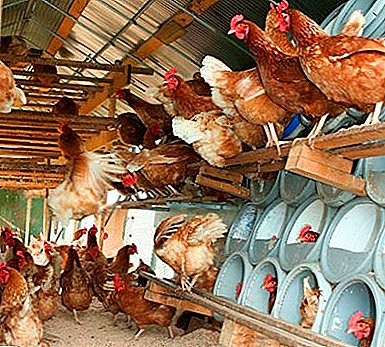 The chicken coop must correspond to the number of birdswho will live in it. It is considered that one square meter can occupy no more than 2-3 hens and roosters. Otherwise, among the different breeds, you can see aggression towards others. Roosters will defend their territory and hens.
The chicken coop must correspond to the number of birdswho will live in it. It is considered that one square meter can occupy no more than 2-3 hens and roosters. Otherwise, among the different breeds, you can see aggression towards others. Roosters will defend their territory and hens.- The temperature in the chicken coop should be year-round not higher than 20 - 25 degrees. This temperature is optimal for year-round uninterrupted egg laying.
It is more convenient to keep birds in the summer because it is not necessary to heat the room additionally, and in the winter it is better to install additional heaters and lamps. The minimum temperature should not be below 10 - 15 degrees. If the coop is cooler, the chickens will start to run less or stop altogether.
- The hen house should also consider the ventilation system.. a budget option would be to make a small door between the pen and the chicken coop, which will serve both for the convenience of free movement of the bird, and for air circulation in the chicken coop.
Or make a specially derived ventilation system in the hen house. The second option will be more costly and time consuming, but convenient, since even with the door closed, fresh air will flow into the pen in the hen house.
High humidity can lead to both fungal diseases and the spread of various infections, so the room should be constantly ventilated (without drafts) in the summer and heated in the winter.
- There should be good lighting in the hen house.. If you want to increase or, on the contrary, slow down the laying of eggs, then you need to extend or reduce the daylight accordingly.
- In order to the chickens laid eggs not anywhere, but in a certain place you need to make nests. There should be at least 2 sockets for 10 layers. Usually they put hay in the nest in order to make the hens feel more comfortable, especially during the cold season.
- Better if the floor in the hen house is wooden with a warm bedding from hay, but by no means concrete, as it is rather cold and will not keep warm at all.
Ceilings should also not be high. The optimal ceiling height should be such that a person of average height is placed there - 1 meter 70 cm. If the ceilings in the hen house are high, then in the winter it will be difficult to heat the room.
Watch the video about the chicken coop device:
Feeding and watering
Proper housing of laying hens at home should include proper feeding. Feed the birds three times a day. Moreover, fresh grass and various root vegetables should fall on the daily part of the diet. Layers are fed with specialized food, in which mineral substances, vitamins and various additives are clearly mixed in equal proportions.
TIP: You can also prepare your own food by mixing various grains, vitamin premix, shell rock and bone or fish meal.
In the morning, birds are usually fed around 9-10 hours, after waking up, it is better to let the chickens walk up and fill the feeders in half an hour. The morning portion should be a little less than the evening one. In the morning it is recommended to feed the birds wet mash. In such a feed, you can mix a small amount of grain, potatoes, beets and carrots, add fish oil.
 Daily feeding should be at 14-15 hours. At this time it is better to feed the bird with freshly cut grass, vegetables.
Daily feeding should be at 14-15 hours. At this time it is better to feed the bird with freshly cut grass, vegetables.
In the evening, the bird is fed for an hour or two before going to bed at about 21-22 hours. Evening feeding should be a little more than the morning., because the bird must be full until the morning. It is better to give preference to grain mixes or mixed fodder.
Also, chickens should have constant access to clean drinking water. It is necessary to ensure that the drinkers are clean and timely replace dirty water with clean water.
In no case can not overfeed layers and cockerels., as the obesity of chickens can provoke egg laying, and they will start to nausea or stop altogether. Males with overweight will badly fertilize eggs, as overfeeding affects the quality of seminal fluid.
Watch the video about the features of feeding laying hens at home:
Content features at different times of the year
Care at the cottage in the summer
What is the content of laying hens in the summer cottage? In the summer, chickens should be free-range for the most part. It is better if they have free access to various herbs and insects, which is quite problematic in urban environments.
Fresh grass must be present in the hen’s diet., as it contains all sorts of vitamins and minerals. When the heat is abnormal, chickens can also start to nausea badly, so if in summer the constant temperature of the air is heated to more than 30 - 35 degrees, you should try to shade the coop and the place of walking.
Keeping hens at home in winter
The maintenance of laying hens in the winter should include a well-heated hen house. Too cold room can lead to stopping the carrying and laying eggs. For replacement in the diet of green grass should be fresh hay.
Content in the country
 Keep chickens can be in the country, provided that they will be provided with constant access to water and food. For this purpose, special feeders and feeders are made, in which feed and water arrive as far as it is consumed. Then you can visit the hens no more than 1-2 times a week in order to collect eggs and fill the barrels with water and food for the next week.
Keep chickens can be in the country, provided that they will be provided with constant access to water and food. For this purpose, special feeders and feeders are made, in which feed and water arrive as far as it is consumed. Then you can visit the hens no more than 1-2 times a week in order to collect eggs and fill the barrels with water and food for the next week.
You can arrange a chicken coop in the barn or any utility room., in addition, it is necessary to warm the walls and the floor, to equip the roost and nests, to enclose a place for walking. In general, the conditions for the chicken coop are the same as in the private farmstead.
Good enough to think about how the feed will come. Usually for this purpose they use large barrels to which special feeders and drinking bowls are attached.
Conclusion
Keeping chickens, both at the cottage and at home, will be an easy process if all conditions are carefully thought out. Chickens will be regularly born, and you can pamper yourself and your loved ones with homemade eggs.


 The chicken coop must correspond to the number of birdswho will live in it. It is considered that one square meter can occupy no more than 2-3 hens and roosters. Otherwise, among the different breeds, you can see aggression towards others. Roosters will defend their territory and hens.
The chicken coop must correspond to the number of birdswho will live in it. It is considered that one square meter can occupy no more than 2-3 hens and roosters. Otherwise, among the different breeds, you can see aggression towards others. Roosters will defend their territory and hens.
